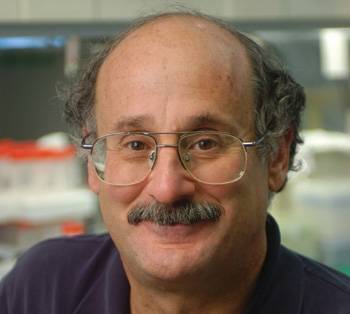A bacteria that lives in hot springs in Japan may help solve one of the mysteries of the early evolution of complex organisms, according to a study just published in PLoS Biology.
 AUSTIN, Texas—A bacteria that lives in hot springs in Japan may help solve one of the mysteries of the early evolution of complex organisms, according to a study just published in PLoS Biology.
AUSTIN, Texas—A bacteria that lives in hot springs in Japan may help solve one of the mysteries of the early evolution of complex organisms, according to a study just published in PLoS Biology.
It may also be the key to breaking through a frustrating bottleneck in 21st century biofuel production.
Biochemists Alan Lambowitz and Georg Mohr began investigating Thermosynechococcus elongatus, a cyanobacterium that can survive at temperatures up to 150 degrees Fahrenheit, after they noticed an unusually high percentage of the bacteria’s genetic sequence was composed of elements known as group II introns.
“Introns are mysterious elements in evolution,” says Lambowitz, a professor of molecular biology and director of the Institute of Molecular and Cellular Biology. “Until the 1970s it was believed that genes in all organisms would be continuous and that they would make a continuous RNA, which would then get translated into a continuous protein. It was found, however, that most genes of the eukaryotes, the higher organisms including humans, aren’t like that at all.”
Lambowitz says most of the genes in higher organism are discontinuous. They consist of DNA coding regions that are separated by areas known as introns.
“Genomes become loaded down with these introns, which are thought to have evolved from genomic parasites that existed for their own benefit and could spread without killing the host organism,” says Lambowitz. “It remains a major question in evolution as to why these introns exist, and how they came to compose such a large part of the human genome.”
In order to better understand the early history of introns, Lambowitz and Mohr have focused their investigation on bacteria because they’re believed to be the original evolutionary wellspring of the introns. They’re looking at T. elongatus in particular because it’s the only known bacteria in which introns have proliferated in a manner similar to that in higher organisms, such as humans.
“We can’t go back a billion years in a time machine to see how introns proliferated in the early eukaryotes,” says Mohr, a research scientist in Lambowitz’s lab. “What we can do is investigate the mechanisms that have allowed introns to proliferate in this organism, and try to infer how they evolved in eukaryotes, like humans, in which as much as 40 percent of the genome is made up of introns.”
Among the mechanisms they’ve identified, perhaps the most surprising has been that heat plays a significant role in allowing introns to proliferate in T. elongatus.
High temperatures, like those found in the hot springs in which the bacteria live, can unwind the DNA strands in the genome and make it easier for the introns to insert themselves.
This evidence of “DNA melting,” says Lambowitz, is particularly suggestive when trying to imagine how introns proliferated in early eukaryotes, because the earth was hotter a billion or so years ago, when the early eukaryotes emerged.
The genomes of the early eukaryotes, says Lambowitz, may have begun with only a few introns, but over time, thanks in part to the high temperatures, the introns could have proliferated rapidly.
Lambowitz and Mohr’s investigation of introns in T. elongatus may also, unexpectedly, prove an enormous boon to researchers who are trying to use other high-temperature (“thermophilic”) bacteria to improve the efficiency of biofuels.
“There’s one bacterial species in particular,” says Lambowitz, “which lives at high temperature and is very good at converting cellulose to ethanol, but has been intractable to genetic manipulation. The Department of Energy has a considerable amount of money invested in it, and they need to improve the strains but haven’t been able to do it. When we discovered these thermophilic introns, which work better at high temperatures, we were able to adapt them pretty rapidly for gene targeting.”
The technology for using group II introns in gene targeting, known as targetron technology, was pioneered by Lambowitz and his coworkers.
Lambowitz and Mohr are already working with scientists at Oak Ridge National Laboratory to see if they can successfully genetically engineer thermophilic bacteria for increased biofuel production.
They also foresee applying what they’ve discovered about T. elongatus introns and temperature to a whole range of biotech and biomedical applications that involve organisms and enzymes that function best at high temperatures.
However, they are still planning to delve further into the more profound, basic scientific questions that drew them to the subject in the first place.
“We care about the evolutionary story,” says Mohr, “because we want to know where we came from.”
“But,” Lambowtiz adds, “it’s nice to know that evolution can also have practical applications.”
This work was supported by National Institutes of Health and the Welch Foundation.
For more information, contact: Dr. Alan Lambowitz, 512-232-3418; Lee Clippard, 512-232-0675.


















Comments